Inside The New York Botanical Garden
Conservatory
Posted in Around the Garden, Photography on August 8 2012, by Matt Newman
Monet’s Garden keeps changing with the season! As summer wears on, the vert Monet architecture mingles with new and complementing florescence.
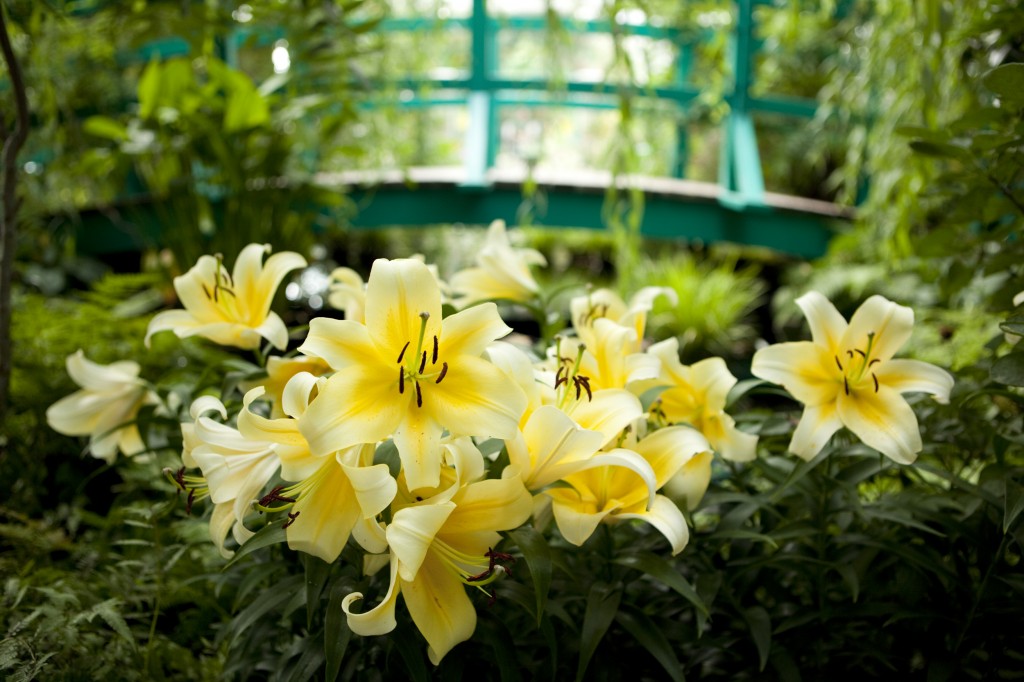
Photo by Ivo M. Vermeulen
Posted in Around the Garden, Photography on August 7 2012, by Matt Newman
Planters like those arranged alongside our hardy water lily pool were often used by Claude Monet to test color schemes before moving his plants into his garden proper. Ours are…thriving, to say the least.
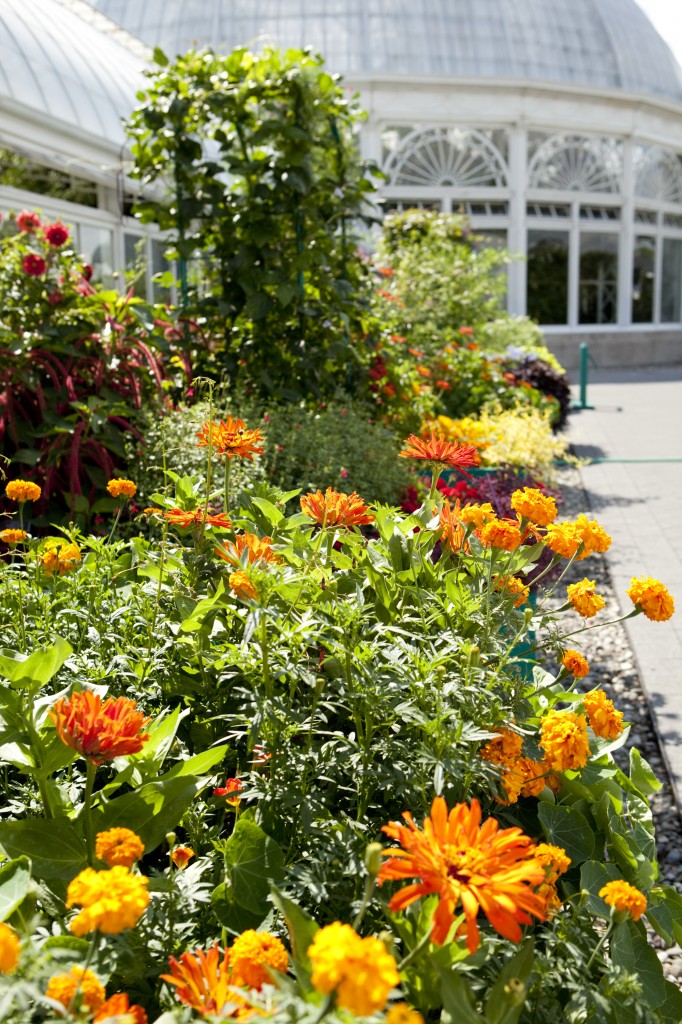
Photo by Ivo M. Vermeulen
Posted in Around the Garden, Photography on July 21 2012, by Matt Newman
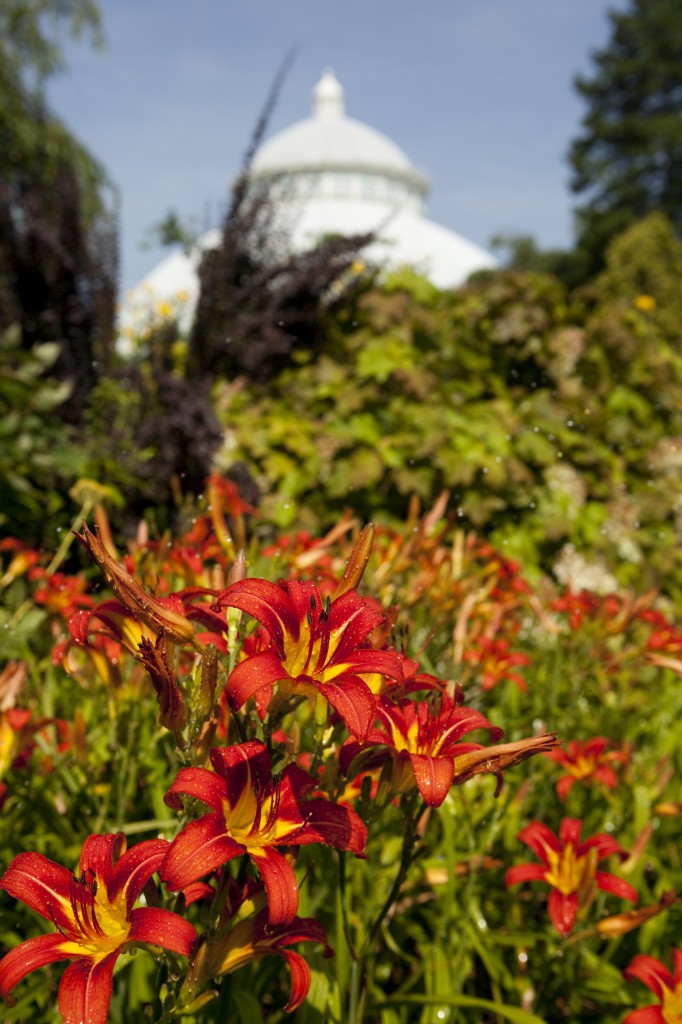
Photo by Ivo M. Vermeulen
Posted in Around the Garden, Photography on July 11 2012, by Matt Newman
I was visiting the Conservatory while these planters–one after the next–were being filled in with summer flowers. Monet’s Garden continues to grow and change as the months pass, meaning what you see come October will be entirely different from what you find blooming now. It’s a nice change of palette from one week to the next.
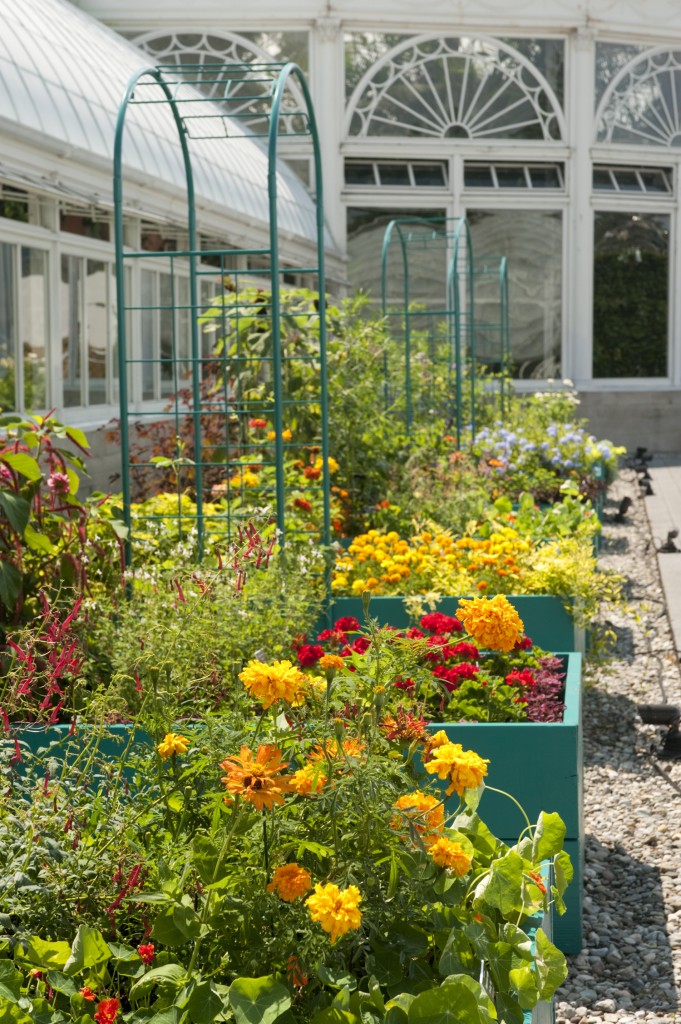
Photo by Ivo M. Vermeulen
Posted in Around the Garden, Photography on July 8 2012, by Matt Newman
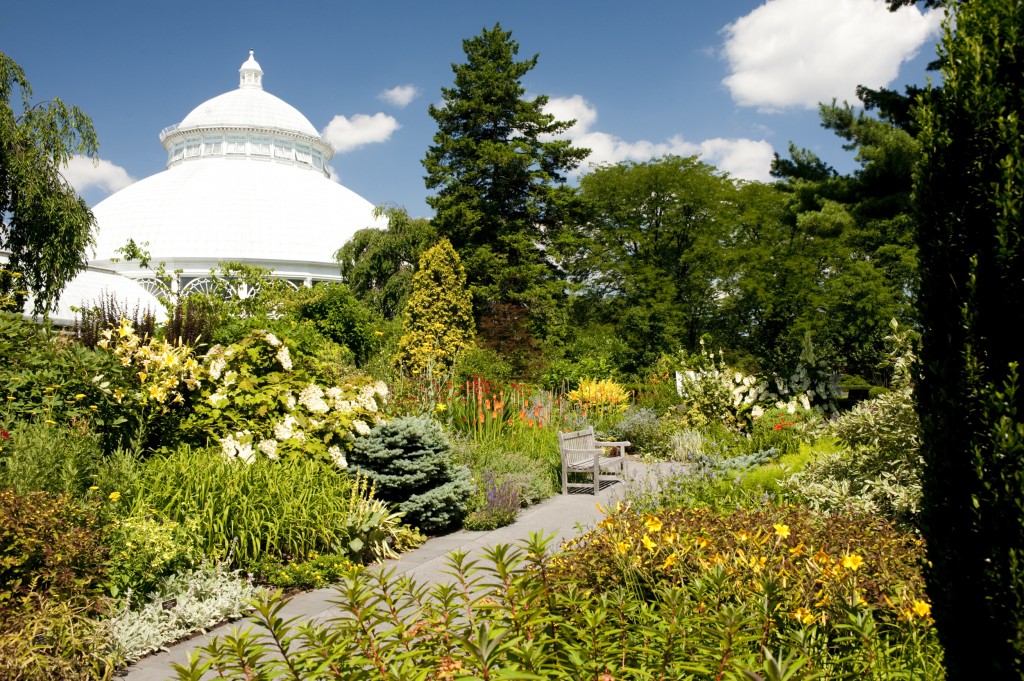
Photo by Ivo M. Vermeulen
Posted in Around the Garden, Gardens and Collections on July 4 2012, by Matt Newman
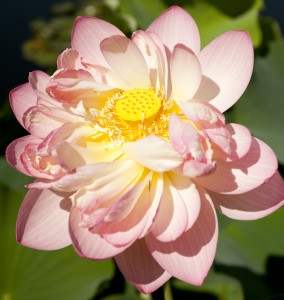 It’s warm but brilliant around the Water Lily Pools. Only shy a few deck chairs and some daiquiris, really. Ivo and I wandered over to the Conservatory the other day to figure out what the Garden’s horticulturists were getting themselves into, only to find everyone up to their waists in the pond. He immediately jumped into a pair of chest-high waders and joined the group–even if it meant swimming for them, Ivo had to have macro shots of the freshly-planted tropical water lilies. Just as I did, I suspect some of those gathered around the pool must have felt the slightest twinge of jealousy.
It’s warm but brilliant around the Water Lily Pools. Only shy a few deck chairs and some daiquiris, really. Ivo and I wandered over to the Conservatory the other day to figure out what the Garden’s horticulturists were getting themselves into, only to find everyone up to their waists in the pond. He immediately jumped into a pair of chest-high waders and joined the group–even if it meant swimming for them, Ivo had to have macro shots of the freshly-planted tropical water lilies. Just as I did, I suspect some of those gathered around the pool must have felt the slightest twinge of jealousy.
Meanwhile, I puttered toward the lotus blossoms.
Like I mentioned on Twitter, the scope of these mythic flowers isn’t something you can reconcile until you see them up close. A few of the Nelumbo nucifera blooms easily near the size of my head when in full splay! They stand there like planets in rings, petals spreading every which way in gradients of rosy color. Others, yet to open, point straight up in cones of spiraled pinks. Still others have already come and gone, leaving fresh seed pods behind. Through this cycle, with every point in the arc visible at once, I can see why the lotus is such an important symbol in followings like Buddhism and Hinduism. I’d have to write a tome to cover even a hint of its many spiritual meanings, from purity, to detachment, to the cycle of life itself.
Read More
Posted in Around the Garden, Photography on June 28 2012, by Matt Newman
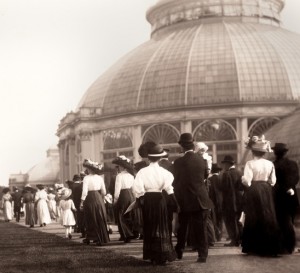 Back in January, I began posting photos in a new series tentatively titled “Past in Focus.” I had an aim of seeking out archived Garden images and recreating those scenes as they exist now–to see in today’s landscape hints of the last century. The photographers and I made the decision to wait until the NYBG was in its full spring growth to set out, though; we figured the pictures would carry more drama and gravity if the contrasts ran high, and now that everything is lush and lively, we come to find out that our well-meaning plan wasn’t quite feasible the way we envisioned it.
Back in January, I began posting photos in a new series tentatively titled “Past in Focus.” I had an aim of seeking out archived Garden images and recreating those scenes as they exist now–to see in today’s landscape hints of the last century. The photographers and I made the decision to wait until the NYBG was in its full spring growth to set out, though; we figured the pictures would carry more drama and gravity if the contrasts ran high, and now that everything is lush and lively, we come to find out that our well-meaning plan wasn’t quite feasible the way we envisioned it.
Last week, Ivo, Mark and I set out with tripods, cameras, a stack of lenses and a crumpled sheaf of old photo copies in hand. I’m not exactly Man Ray, so the other two did the hard work while I tagged along as a notebook-wielding nuisance; certainly they knew the ins and outs of the Garden’s layout better than I did at this point. After only 10 or 20 minutes and a few head-scratching shuffles around the front of the Enid A. Haupt Conservatory, we were already stymied. Not only were the spring trees too leafy in places for us to tie in many of the landmarks seen in the original photographs, but the actual landscape of the Garden had changed. Hills had been raised, pathways rerouted, new collections added.
Read More
Posted in Monet's Garden on June 18 2012, by Joyce Newman
Joyce H. Newman is the editor of Consumer Reports’ GreenerChoices.org, and has been a Garden Tour Guide with The New York Botanical Garden for the past six years.
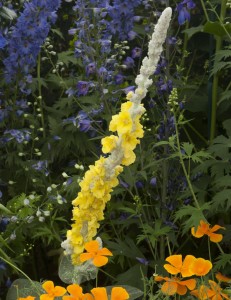 Yes, it’s a weed, it’s a biennial, and it’s called mullein (Verbascum bombyciferum). So many visitors asked me about this plant during a recent Conservatory tour of Monet’s Garden that, as soon as I got home, I went straight to the computer to look up more information.
Yes, it’s a weed, it’s a biennial, and it’s called mullein (Verbascum bombyciferum). So many visitors asked me about this plant during a recent Conservatory tour of Monet’s Garden that, as soon as I got home, I went straight to the computer to look up more information.
When it comes to weeds, as Ralph Waldo Emerson once said, “A weed is a plant whose virtues have not yet been discovered.” And it seems Monet’s keen eye was quick to see those virtues in mullein, especially when its wooly, whitish leaves were placed near the foliage of poppies.
For our exhibition, Monet’s spring flower garden features lots of poppies in many colors alongside–you guessed it–mullein. Rising over four feet high, the showy yellow flowers really stand out, prompting visitors to ask, “What’s that?”
Read More
Posted in Around the Garden, Photography on June 18 2012, by Matt Newman
I like to think Monet would approve of the Water Lily Pond here, with its artful, circular collections of pads, and the monolithic image of the Enid A. Haupt Conservatory over all.
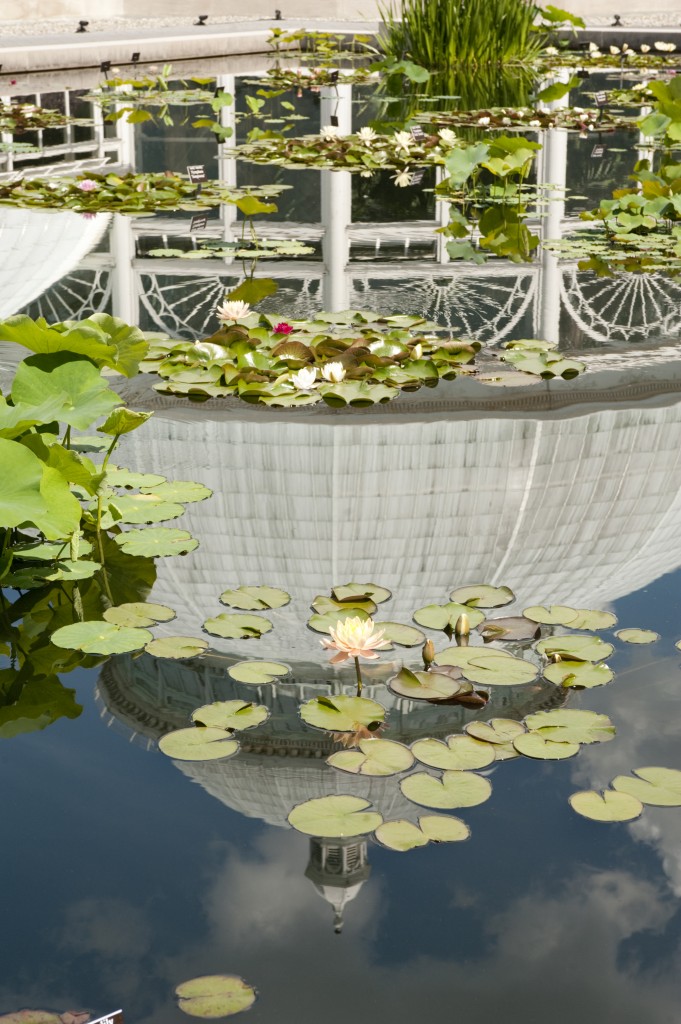
Photo by Ivo M. Vermeulen
Posted in Learning Experiences on May 16 2012, by Tai Montanarella
Tai Montanarella is the Manager of School and Family Programs at The New York Botanical Garden.
 How do plants in the rain forest survive? This was the question on the minds of Prospect Hill Elementary School students as they explored the Enid A. Haupt Conservatory. It was here at the NYBG that they became first-hand field scientists for a day, embarking on their own botanical expedition through the diverse tropical rooms of our glasshouse.
How do plants in the rain forest survive? This was the question on the minds of Prospect Hill Elementary School students as they explored the Enid A. Haupt Conservatory. It was here at the NYBG that they became first-hand field scientists for a day, embarking on their own botanical expedition through the diverse tropical rooms of our glasshouse.
While they did not have to get on a plane to visit these rain forests, these third graders did have to travel through extreme biomes before they could reach them. This is a museum of plants, after all. Their journey began when they got off the bus, where they were not only greeted by GreenSchool educator Pilar Okeson, but by a fantastic Zelkova tree (Zelkova serrata). Hailing all the way from Japan, this deciduous tree does equally well in the temperate climate of New York City, and can reach 100 feet tall. It was only the first of many exotic plants the children would encounter.
Read More










